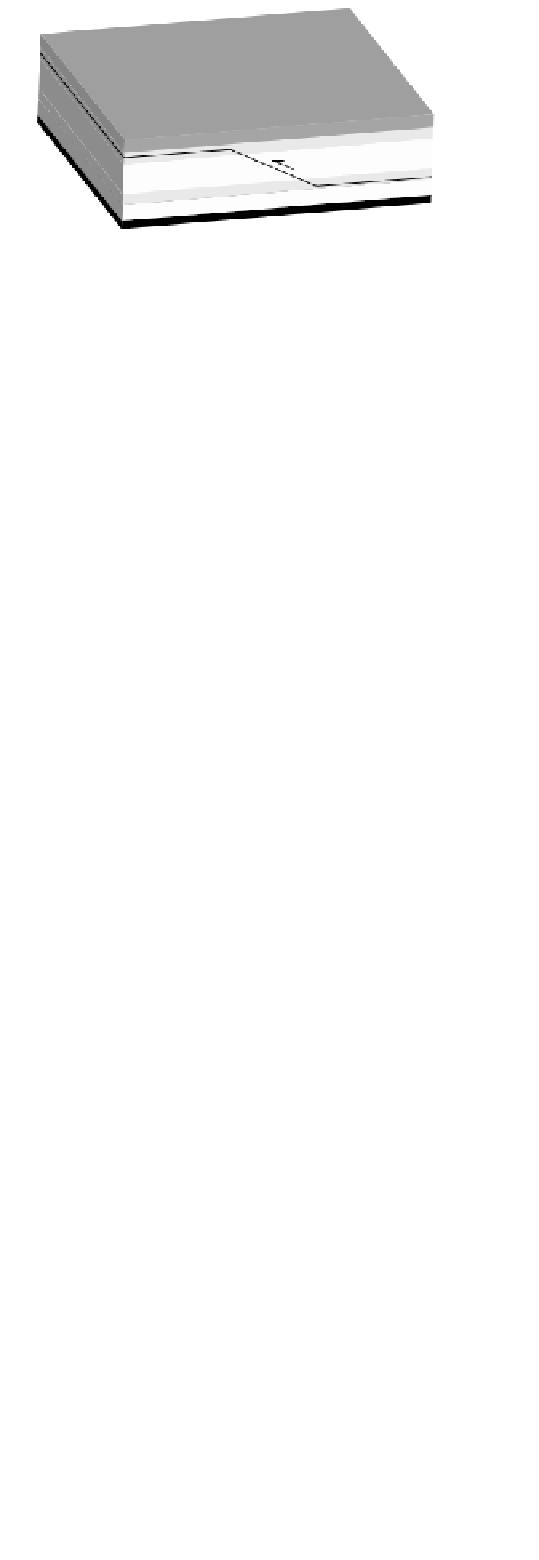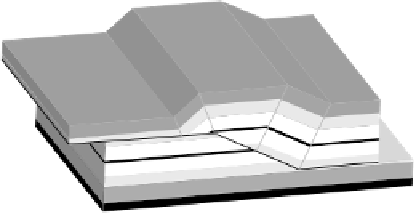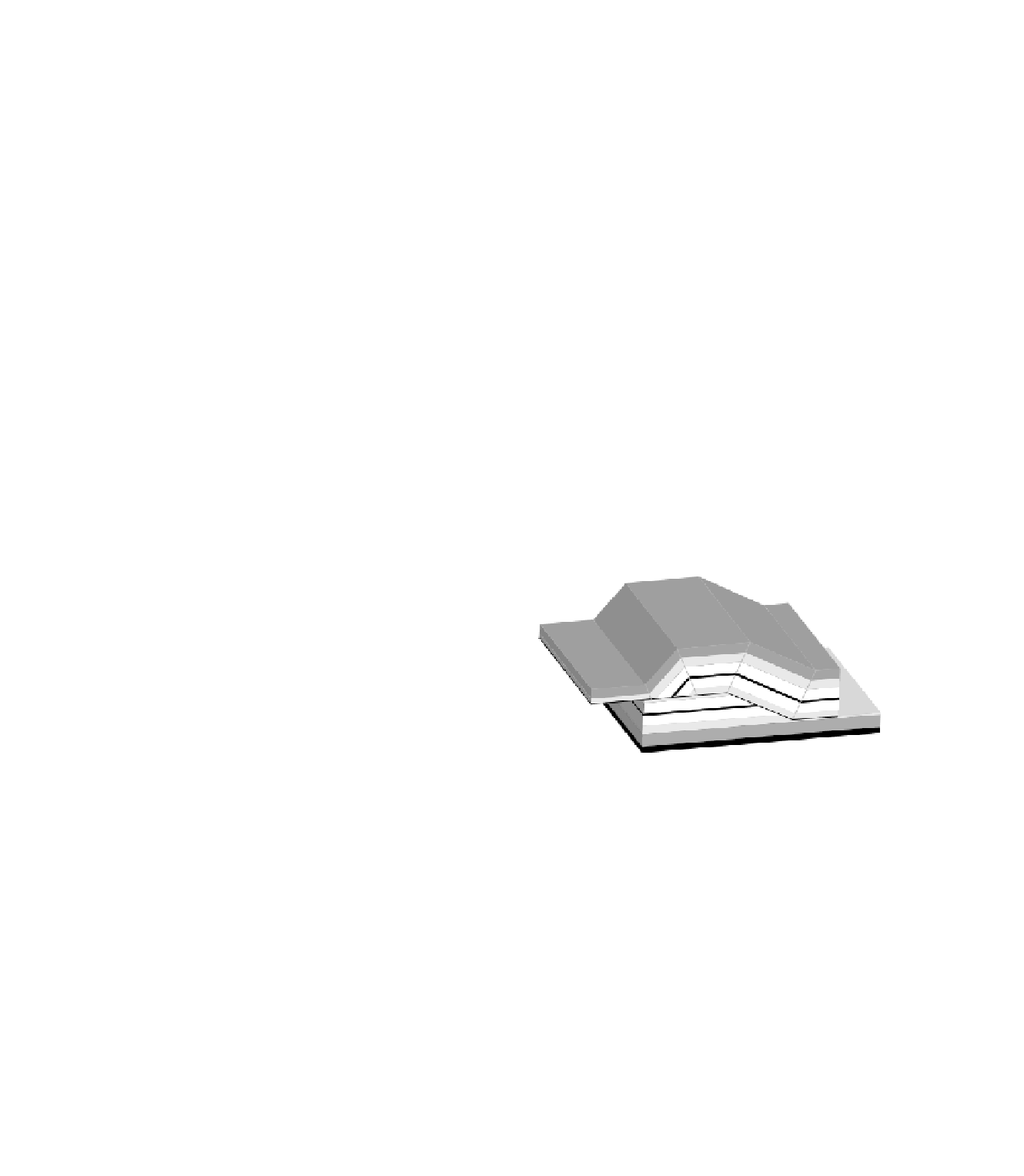Geoscience Reference
In-Depth Information
transport direction, running toward another incompetent
layer where another
decollement
or flat is formed. The
presence of ramps produces particular deformations in the
hangingwall as described for normal faults. A very promi-
nent structure is a syncline lying on the lower reach of the
ramp surface that evolves toward an anticline located over
the upper end of the ramp. As the hangingwall block
climbs the footwall ramp, a syncline is formed at the toe
and an anticline at the top of the ramp. Although the syn-
cline axial surface remains in the same position, the limbs
get progressively larger (Fig. 4.107). The anticlinal folds
formed in the hangingwall develop ramp and flat geome-
tries too. There are various models for fault propagation
but they basically involve two kinds of thrust fault arrange-
ment into thrust sheets. The first is formed by the faults
that break the topographic surface and whose fault trace
can be followed in the field. These faults can be arranged
in different forms but most typical occurrences in fold and
thrust belts are imbricate fans of listric faults, concave
toward the hinterland, joining a basal sole fault
(Fig. 4.105). These structures are known as
schuppen
zones
. The second prominent structure are duplexes in
which a set of horses are confined between two detach-
ment faults, a roof fault and a foot fault. Horses forming
the duplex can be inclined toward the foreland, the hinter-
land, or can stack vertically (Fig. 4.108).
(a)
ramp
(b)
A
S
S
(c)
A
S
S
4.15.6
Strike-slip faults
(d)
HWR
According to Anderson's theory, strike-slip faults form
when the intermediate principal stress (
A
2
), is vertical and
due to gravitational loading, which means that in a hori-
zontal surface of the remaining principal axis one direction
experiences a compression larger than the vertical load and
the other is subjected to extension or to a compressive
stress less intense than the vertical load (Fig. 4.101). As a
result, there is a direction of horizontal regional shorten-
ing (parallel to the direction of
S
S
Fig. 4.107
Hangingwall deformation produced by overthrusting over
a footwall block with flats and ramps. As the hangingwall block
climbs the footwall ramp, a syncline (S) is formed at the toe and an
anticline (A) at the top of the ramp. Although the syncline axial sur-
face remains in the same position, the limbs get progressively larger
HWR: hanging wall ramp.
1
), normal to the direc-
tion of maximum lengthening (parallel to the direction of
3
). There are a number of geologic settings in which
strike-slip faults form, the most prominent being trans-
form plate boundaries (Section 5.2), characterized by
horizontal shearing and movement of blocks along close-
to-vertical faults. These
transform faults
lie perpendicular
to the spreading centers of midoceanic ridges, separating
lithospheric reaches expanding at different rates. The term
transform fault is used strictly for all faults affecting the
whole lithosphere, which mark plate boundaries both in
continental and ocean settings (Figs 4.109 and 4.110).
Other large-scale strike-slip faults on continental settings
that are not a part of plate boundaries are called
transcur-
rent
faults. Apart from transform plate boundaries, strike-
slip faults appear in other geotectonic environments such
as extensional provinces and compressive settings, like













Search WWH ::

Custom Search